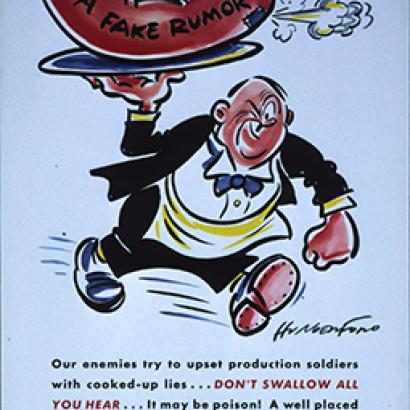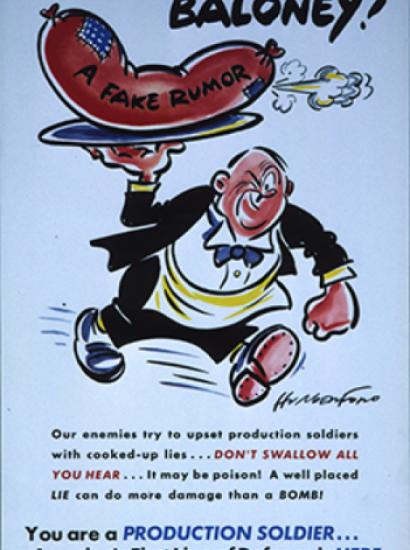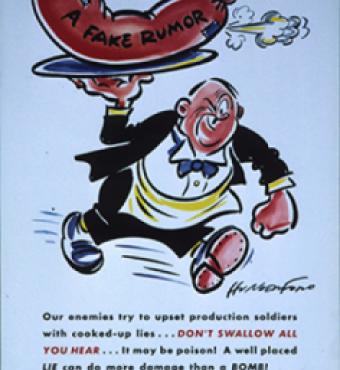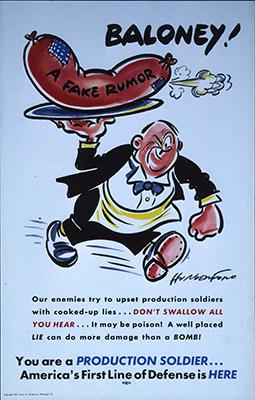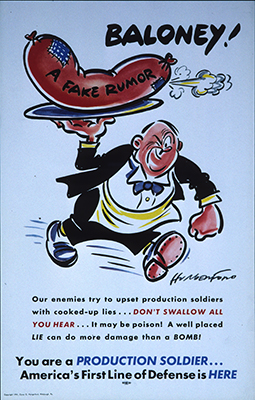
No plague in history spread with the speed of internet disinformation. We live in an age of hyper-charged propaganda, an onslaught of lies more pervasive than any that came before. Over millennia, propaganda changed minds. Today, it changes governments and subverts institutions. And this flood has burst the dams that, for centuries, kept the foulest waters in check.
Propaganda and its ultimate product, subversion, are ancient. The imprinted profiles of early rulers on coins served as propaganda, while subversion efforts appear in the Old Testament. Monotheist religions always engaged in propaganda, as did ruling dynasties—the faces of female saints in Milanese Renaissance portraits bear a striking resemblance one to the other because the Visconti and Sforza dynasties had their wives and daughters sit as models for Madonna and Child to legitimize their rule.
But modern propaganda really got started with the Reformation and Counter-Reformation, as contests of belief collided with newly inexpensive printing technologies. The result was twelve decades of merciless wars of religion.
Eventually, an ethical reform gathered force. Newspapers as we know them got off to a start in the eighteenth century and swelled wildly in popularity in the nineteenth, as literacy increased and technical advances enabled mass production and distribution—and the vital gatekeepers called “editors” emerged. Particularly in the English-speaking world, but also in Europe’s other advanced societies, even the most hysterical printed diatribes had to have some provable grounding in facts. Accuracy became an ideal (if, as with many ideals, it has never been fully attained).
Then new media—and new dangers—emerged. As communications means broadened, first to radio and film, then to television, propaganda enjoyed a new heyday under authoritarian regimes and dictatorships. Even today, Leni Riefenstahl’s images of mass Nazi rallies grip the viewer, as do the brilliant, if obsequious, films of Sergei Eisenstein: two artists in amoral service to evil, killers with cameras.
In contrast, the American media, even at their most partisan, needed facts behind the spin. Those unsung heroes, responsible editors, might have bent to the publisher’s editorial policies, but they spiked outright lies. Planted stories did slip through: In Stalin’s 1930s heyday, The New York Times made the still-haunting mistake of trusting a corrupted foreign correspondent who lied on a grand scale about conditions in the Soviet Union. Generally, though, Western consumers of mainstream news sources received a fact-based picture of the world.
Today’s pop culture celebrates a few big-name editors who broke convulsive stories, but the true heroes holding the bridges and gates were the workaday editors from Springfield to San Diego who wanted to know, “Where’s the proof?”
Now their efforts have been overwhelmed by a hydra host of websites, blogs, tweets, trolls and troll farms, self-radicalized fanatics, attention-seekers, and skillful propagandists who suddenly can reach millions without a filter, without the need to meet editorial standards of background knowledge and truth. It’s a crippling threat to the democracies and republics that champion free speech and the open exchange of ideas.
And the Russians, once again, are leading the charge.
Whether in its czarist, Soviet or current klepto-nationalist incarnations, Russia long has been an outlier, embracing shameless propaganda in the absence of a culture of facts. The first international triumph of Russian-spread propaganda was the czarist Okhrana’s (secret police) dissemination and exploitation of a then-obscure pamphlet, “The Protocols of the Elders of Zion,” which soon became the most notorious—and murderous—anti-Semitic screed in history (the document is still accepted as truth in the Arab world and, in recent decades, served as the frame for an Egyptian television mini-series).
As for the Soviets, even their spiritual father, Karl Marx, was a far better propagandist than economist. His Communist Manifesto begins with an ambitious lie, “A specter is haunting Europe, the specter of Communism.” Communism would, indeed, spook the world one day, but it was hardly on the playing field in 1848. And Marx’s grandiosity established the template for Lenin to seize the term “Bolsheviks,” or “those of the majority,” for his pitiful, ruthless handful of acolytes.
Stalin then developed a propaganda machine that not only lied, but told precisely the lies the world wished to hear (ever a key to effective propaganda). Western dupes praised the Soviet Union through every man-made famine and vast purge. Then, in the post-WWII era, the USSR and the USA waged a propaganda war for Western Europe, focused on influencing elections from Greece and Italy to France (materialism, not the dialectic, won). Next came the Soviet-sponsored “Ban the Bomb” movement, succeeded by its unruly stepchildren, the anti-nuke protests of the 1970s and 1980s in Europe.
And let us not forget the still-circulating claim by Soviet propagandists that AIDS was developed by the CIA to kill African blacks.
Through all these assaults, responsible Western media punctured the Soviet lies, condemning them to the fringes of discourse. Thank editors again. We, the people, generally recognized propaganda, and its outlets were limited. To buy ill-printed Soviet books (as I did when studying Russian), you went to a single bookstore on Shaftesbury Avenue in London which made no secret of representing Moscow. The clerks were as drab and dreary as their wares.
Then the digital revolution arrived to conjure internet anarchy. This Fifth Horseman of the Apocalypse, the avatar of the genocidal lie, empowered fanatics and propagandists everywhere: one man or woman with a laptop computer could spread a destabilizing or deadly claim worldwide. Further enabled by Silicon Valley hubris, which discounted editorial checks, the new apparatchiks of Putin’s Russia suddenly could run wild—the bigger the lie, the warmer its reception by the ill-educated, the disaffected or the cravenly ambitious, by political hacks, bigots, fanatics and madmen. Under the false flag of free speech, the internet subverted our democracy, and its corporate masters grew fabulously rich through their self-adoring irresponsibility.
Putin’s Russia swiftly leapt from propaganda to outright information warfare. 2016 was our information-age Pearl Harbor. But instead of standing shoulder to shoulder against the threat to our vital institutions, we’ve been reduced to squabbling amongst ourselves, compounding the effects of Russian schemes.
We’ve entered a new age of hyper-propaganda, of post-modern warfare. If we fail to unite and take this threat as seriously as the danger from long-range missiles or terrorism, we’re committing suicide by the gigabyte.
Now it’s up to the titans of tech to defend the civilization that enriched them by imposing objective editorial standards on their platforms, to develop a new and credible system of guardians of the facts, of gatekeepers against subversive lies. And the private sector, not the government, has to do it.
Or we can let the propagandists win.







